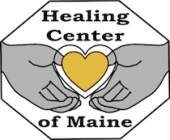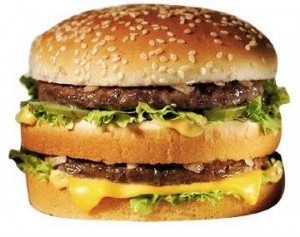by Shirley Wright
Each of us makes a conscious choice about what we put in our mouths each day. How many of you have made a conscious decision not to smoke cigarettes? I made that decision many years ago, before my father died of lung cancer. While I watched him die, I reaffirmed this decision and wished so greatly for him, that he had made the same decision while his lungs were still healthy.
How many of you think about what you put in your mouth or on your body each day? I would guess, not many. Or, maybe you think, I know it’s bad but I’m eating it anyway! I’ve said that to myself a few times over the years. I am a firm believer now that what goes in mouth is going to be good for me and nourish my body. How did I get there? Well, it was really quite simple, or maybe it’s difficult, but either way, it’s necessary.
“You are what you eat.” Ever heard that one? What if it were taken as gospel truth in your life? What would that mean?
Try this for a day.
Before you put anything in your mouth, ask these simple questions:
- Is this the best quality food I can afford?
- Who prepared this food and what is in it?
- Will this food nourish my body?
- Which body system will this food most likely effect?
If you are answering “No” to the first three questions, you are quite possibly doing damage to your health. For question #4, you want to positively effect body systems. That’s the simple answer. Your body needs protein, fat and carbohydrates to run. These building blocks are also the foundation for your health, or in some cases for your sicknesses.
In very simple terms, protein builds muscle. Fat (good fat only) builds body systems including hormone balance and brain chemistry. Carbohydrates affect metabolism. The body needs a balance of all three to run efficiently.
Today’s purchased food is full of junk. Additives and preservatives top the list of “chemicals’ that are added to food at a rate that is almost out of control in the United States. Genetically modified foods and food ingredients are rampant in our society. Rancid or bad fats are used in almost every fast-food establishment to prepare food. It’s commonly known that these food sources cause diabetes, high blood pressure, and cancer. Why, then, do people keep eating these things? I believe that people eat this food because it’s easier and they are not making it part of their conscious day. People shove food in their mouths when they are hungry – without thinking!
So, when you pick up that Big Mac, ask the four questions above. Is it the best quality food that you can afford? I would daresay that, no, it is not. The average McDonald’s meal costs $6. For that same price, a person could buy a healthy wrap or salad. Who prepared this food and what is in it? Yikes – so many hands have touched that food before it gets to your mouth, that I cannot even venture a guess who prepared it. What is in it? Well, here’s a list of what is in a Big Mac (this listing of ingredients was taken from the internet site (http://www.examiner.com/article/fast-food-investigation-what-are-the-real-ingredients-of-a-big-mac)
Big Mac® Bun:
— Enriched flour (bleached wheat flour, malted barley flour, niacin, reduced iron, thiamin mononitrate, riboflavin, folic acid, enzymes)
— water
— high fructose corn syrup
— sugar
— soybean oil and/or partially hydrogenated soybean oil
— Enriched flour (bleached wheat flour, malted barley flour, niacin, reduced iron, thiamin mononitrate, riboflavin, folic acid, enzymes)
— water
— high fructose corn syrup
— sugar
— soybean oil and/or partially hydrogenated soybean oil
The bun also contains 2% or less of the following:
— salt
— calcium sulfate
— calcium carbonate
— wheat gluten
— ammonium sulfate
— ammonium chloride
— sodium stearoyl lactylate *
— datem *
— ascorbic acid*
— azodicarbonamide*
— mono- and diglycerides*
— ethoxylated monoglycerides*
— monocalcium phosphate*
— enzymes*
— guar gum*
— calcium peroxide*
— soy flour*
— calcium propionate (preservative)
— sodium propionate (preservative)
— soy lecithin
— sesame seed.
— salt
— calcium sulfate
— calcium carbonate
— wheat gluten
— ammonium sulfate
— ammonium chloride
— sodium stearoyl lactylate *
— datem *
— ascorbic acid*
— azodicarbonamide*
— mono- and diglycerides*
— ethoxylated monoglycerides*
— monocalcium phosphate*
— enzymes*
— guar gum*
— calcium peroxide*
— soy flour*
— calcium propionate (preservative)
— sodium propionate (preservative)
— soy lecithin
— sesame seed.
· indicates: dough conditioner
Big Mac® Sauce:
— Soybean oil
— pickle relish (which is made of:)
— diced pickles
— high fructose corn syrup
— sugar
— vinegar
— corn syrup
— salt
— calcium chloride
— xanthan gum
— potassium sorbate (preservative)
— spice extractives
— polysorbate 80
— distilled vinegar
— water
— egg yolks
— high fructose corn syrup
— onion powder
— mustard seed
— salt
— spices
— propylene glycol alginate
— sodium benzoate (preservative)
— mustard bran
— sugar
— garlic powder
— vegetable protein (hydrolyzed corn, soy and wheat) – fancy name for MSG
— caramel color
— extractives of paprika
— soy lecithin
— turmeric (color)
— calcium disodium EDTA (protect flavor).
If you are still interested in eating a Big Mac®, here are the nutritional details required by an FDAfood label:
7.5 oz (214 g) total weight
540 total calories
260 calories from fat
29 grams of fat (45% of recommended daily allowance)
10 grams saturated fat (50% of daily allowance)
1040 mg of sodium (43% of daily allowance)
45 grams of carbohydrates (15% of daily allowance)
3 grams of fiber
9 grams of sugar
25 grams of protein
540 total calories
260 calories from fat
29 grams of fat (45% of recommended daily allowance)
10 grams saturated fat (50% of daily allowance)
1040 mg of sodium (43% of daily allowance)
45 grams of carbohydrates (15% of daily allowance)
3 grams of fiber
9 grams of sugar
25 grams of protein
*Azodicarbonamide is banned as a food additive in many parts of the world. And many people are trying to eliminate monosodium glutamate from their diets.
In just one burger, the consumer gets high fructose corn syrup (closely related to diabetes), MSG (flavor enhancer that causes multiple health issues), hydrogenated oil (which is highly suspected of causing high cholesterol and high blood pressure), and a shopping cart full of other additives and preservatives – some of which have been banned in other countries! The beef probably has been raised inhumanely and is full of antibiotics and growth hormones. I would hope that this list would make your answer to question number 2 a solid NO!
Question #3, Will this food nourish my body? I’d say that is a huge “NO!” It may, in fact, do a lot of damage to your body. And, question #4, Which body system will this food affect? Well, it could do damage to many.
Now the million-dollar question is this. What could I eat instead that would give me a solid yes answer to questions 1 through 3 and affect body systems (question 4) positively? Here is a sample replacement meal:
· Hamburger patty (or two) made from grass-fed beef
· Cheese made from raw milk
· Add some good fat like raw butter or coconut oil
· Sprouted-grain bread
· Fresh, organic lettuce
· Fresh, organic tomato
· Other fresh veggies as desired
I’m sure you’re thinking, “I have a half hour for lunch. Where can I get something like that?” My first answer would be to tell you to find a local health food store. There’s a good chance that they have a lunch counter where you can order a healthy sandwich. My second answer would be to tell you to find local food producers in your area and buy your food from them. PACK A LUNCH from your leftover dinner the night before. If you ate out last night, chances are, your body needs some serious nutrients. Eating healthy and eating out may not go together in some areas.
Research healthy food, and just say NO to bad food. Nourish your body through food. The positive health effects will be amazing!
Latest posts by Shirley Wright, LMT, RMT (see all)
- Do You NEED Vitamin Supplements? - November 12, 2016
- Real Women’s Healthcare – A Missing Link - December 27, 2014
- Touch Matters - August 13, 2013



No comments yet.